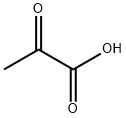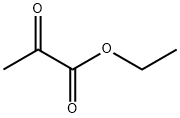A5411012
Methylglyoxal , 40%solution , 78-98-8
Synonym(s):
Acetylformaldehyde;Methylglyoxal solution;Pyruvaldehyde;Pyruvic aldehyde
CAS NO.:78-98-8
Empirical Formula: C3H4O2
Molecular Weight: 72.06
MDL number: MFCD00006960
EINECS: 201-164-8
| Pack Size | Price | Stock | Quantity |
| 50g | RMB37.60 | In Stock |
|
| 100g | RMB72.00 | In Stock |
|
| 250G | RMB140.80 | In Stock |
|
| 1KG | RMB336.00 | In Stock |
|
| 5kg | RMB1425.60 | In Stock |
|
| others | Enquire |
Update time: 2022-07-08
PRODUCT Properties
| Melting point: | 25 °C |
| Boiling point: | 72 °C |
| Density | 1.19 g/mL at 20 °C |
| vapor pressure | 25.09hPa at 20℃ |
| refractive index | n |
| FEMA | 2969 | PYRUVALDEHYDE |
| RTECS | UZ0700000 |
| storage temp. | 2-8°C |
| solubility | DMSO (Slightly), Methanol (Slightly), Water (Soluble) |
| form | Solution |
| color | Clear yellow to yellow-brown |
| Odor | at 1.00 % in propylene glycol. sweet acidic ethereal brown rum |
| Odor Type | caramellic |
| biological source | synthetic |
| Water Solubility | >=10 g/100 mL at 17 ºC |
| Sensitive | Air Sensitive |
| Merck | 14,6081 |
| JECFA Number | 937 |
| BRN | 906750 |
| InChIKey | AIJULSRZWUXGPQ-UHFFFAOYSA-N |
| LogP | -1.06 at 25℃ |
| CAS DataBase Reference | 78-98-8(CAS DataBase Reference) |
| IARC | 3 (Vol. 51) 1991 |
| NIST Chemistry Reference | Propanal, 2-oxo-(78-98-8) |
| EPA Substance Registry System | Methylglyoxal (78-98-8) |
Description and Uses
Methylglyoxal is used in organic synthesis, as of complex chemical com- pounds such as pyrethrins, tanning leather, flavoring.
Safety
| Symbol(GHS) |    GHS05,GHS07,GHS08 |
| Signal word | Danger |
| Hazard statements | H290-H317-H318-H341 |
| Precautionary statements | P202-P234-P280-P302+P352-P305+P351+P338-P308+P313 |
| Hazard Codes | Xn,Xi,C |
| Risk Statements | 22-36-35 |
| Safety Statements | 26-36-45-36/37/39 |
| RIDADR | UN 3265 8 / PGIII |
| WGK Germany | - |
| Hazard Note | Irritant |
| TSCA | Yes |
| HS Code | 29121900 |
| Hazardous Substances Data | 78-98-8(Hazardous Substances Data) |



